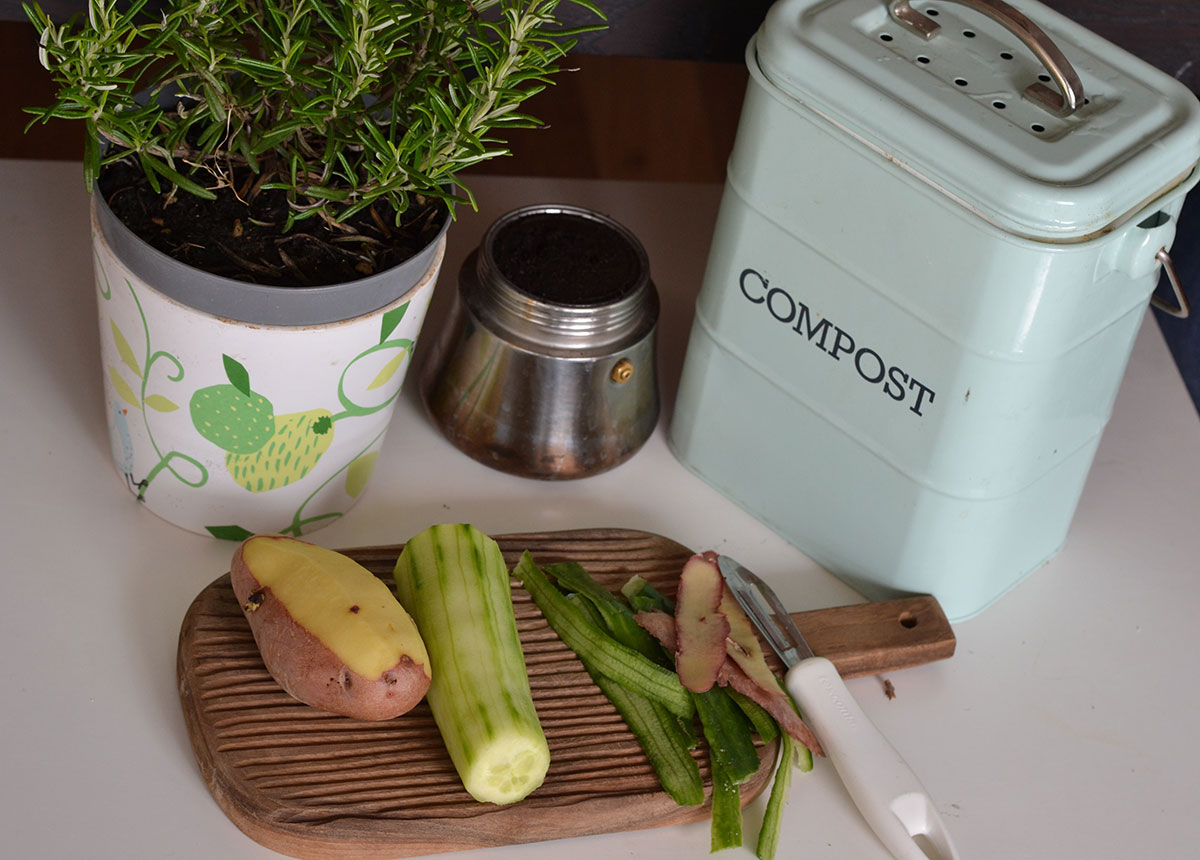Everything we buy or consume has energy and carbon emissions attached to it, from how it was sourced, to how it's made, to how it's recycled or disposed of. The emissions that are produced in a product's full life are called 'cradle to grave' emissions, and some are much higher than others.
Take plastic, for example. Nearly every piece of plastic begins as a fossil fuel, requires a lot of energy to produce, and generates emissions throughout its lifecycle, from extraction, transport, refining, manufacturing, and disposal. According to a 2019 report(external link) from the Centre for International Environmental Law, by 2030 the emissions from the plastic lifecycle could reach 1.34 gigatonnes per year — that's equivalent to the emissions released by more than 295 coal-fired power plants.
Save energy, emissions, and money
The decisions we make around buying or consuming products have an impact on our carbon footprint. But those decisions don’t have to be hard ones – there are ways to get more out of what you’re using, whilst also cutting waste, energy, and your carbon footprint.
According to the World Bank, 2.01 billion tonnes of solid waste is produced each year, which works out to be an average of 0.74kg per person per day, or 270.1kg per year. In New Zealand, the Ministry for the Environment estimates that emissions from landfills make up 4% of our national total.
According to the World Bank...
- 2.01 billion tonnes of solid waste is produced each year
- 270.1kg per person/year on average
- 4% of New Zealand's emissions come from landfills
One of the biggest impacts we can have is saying no to the stuff we don’t need — like that piece of clothing that only gets worn once, or a gift that never gets used. And by saying no to the purchases you don’t need to make, you’ll also be saving money.
And when it comes to the things we do need, we can collectively choose products that take less energy to make, produce fewer emissions, and can be recycled or composted or repurposed. Together, our decisions around what we buy and where we spend money are really powerful — like a vote for the things we care about.

Actions you can take
The good news is that we can all make little choices every day that save energy and reduce waste – things like saying no to the things we don’t need, reusing the things we do, and switching to better options.
We’ve put together some tips to help get started.
-
1
Work out your carbon footprint
If you want to reduce your carbon footprint, first you need to understand what makes it up. There are a number of tools that can help you do that, like FutureFit or CoGo.
-
2
Put needs overs wants
It’s important to think carefully about your purchases. The most sustainable item is the one you never bought – so when you’re looking at buying something, decide whether you really need it.
-
3
Choose better products
Making sure that what you buy can be reused, composted, or recycled will mean sending a lot less waste to landfill. Go for plant-based products like wood, cardboard, or linen that generally require less energy than synthetic-based products and can be recycled or composted more easily.
-
4
Swap plastic for a better alternative
It’s estimated that by 2050, plastics could account for 13% of the global carbon budget(external link), once their cradle-to-grave emissions are taken into account. For most of the everyday items we buy, you can choose non-plastic alternatives that use less harmful materials or can be reused. Think bamboo toothbrushes, beeswax wrap, and soap or shampoo bars.
-
5
Give or sell, don’t throw away
What you don’t want anymore, someone else might. Take the things you don’t need to places like the Hospice Shops or Salvation Army stores who will re-sell them. Or sell your items on Trademe, Facebook Marketplace, or at local garage sales.
-
6
Take your own containers
Taking your own coffee cup is a great way to cut down on single-use items. The University of Melbourne(external link) has estimated that over a year, using a reusable cup can reduce greenhouse gas emissions by up to 92% compared to disposable cups. Supermarkets and most restaurants and cafes will also let you take your own containers, so you don’t need to use disposable alternatives.
-
7
Plan your meals
New Zealanders throw away over 75,000 tonnes of food each year – that’s 32kg each – worth $560 per household. After transport, food waste has the biggest impact on our carbon footprint. So planning your meals and buying only what you need will cut out food waste, reduce emissions, and most likely save you money too.
-
8
Start composting or a worm farm
Composting is a natural way of recycling that keeps any unavoidable food scraps out of landfill where they will produce emissions. It’s also great for your garden. If you don’t have the space to compost, worm farms are a great alternative.
-
9
Give experiences, not things
When it comes to getting gifts, swap physical things for experiences, donations on their behalf, or just spending time together. It’s often more meaningful than physical things, and nothing needs to be thrown out.
